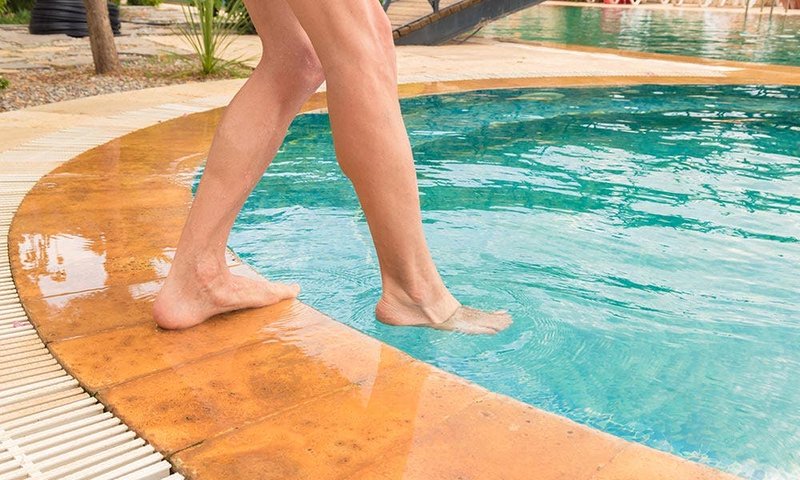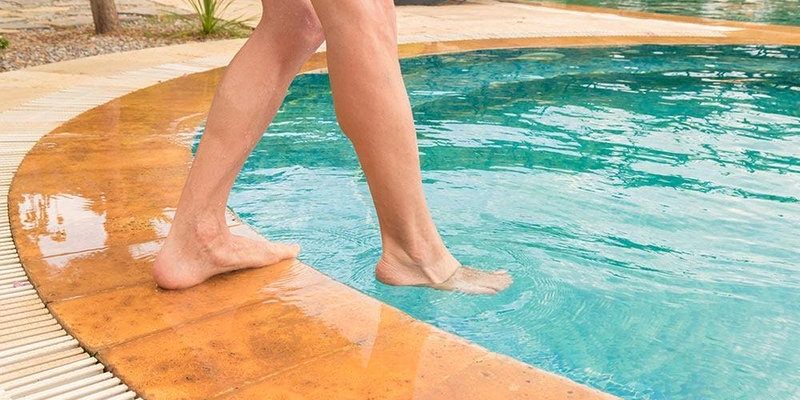
Here’s the thing: the Polaris pool remote isn’t just a fancy button pusher. It’s more like a tiny command center in your hand, making sure your pool and spa are ready when you are, whether that’s for a sunrise dip or a midnight float. If you’re new to this, no worries—it’s not as intimidating as it first seems. Let me walk you through how to set the temperature remotely, what to watch out for, and how to avoid the classic “why isn’t this working?!” moments. Grab your favorite drink, let’s get hands-on (remotely, of course).
Getting to Know Your Polaris Pool Remote
Before you dive in—pun intended—with remote temperature control, it’s important to understand what exactly you’re holding. The Polaris pool remote isn’t just a generic universal remote from the electronics aisle; it’s a purpose-built device designed to interact specifically with Polaris pool automation systems. Think of it as the bridge between you and your pool’s brain, with each button triggering a specific action: heater on, lights up, jets whirling, and of course, temperature tweaks.
The remote typically comes with a clear LCD screen, a simple navigation pad, and labeled buttons for heating adjustments. Some models even feature touchscreen capabilities, while others lean into more classic, tactile buttons. At first glance, there might be a lot going on—menus for equipment, timers, or modes—but don’t let that overwhelm you. Every feature is designed to make life easier, and yes, this includes syncing up with your pool’s heating system for temperature changes.
Honestly, it’s like upgrading from a rotary phone to a smartphone when it comes to pool controls. Once you get the hang of your Polaris remote, you’ll wonder how you ever managed by the pool’s edge, fumbling with hidden knobs and faded stickers. It’s all about making pool time fun, not fussy.
How Remote Temperature Setting Works
You might be wondering, “How does pressing a button from my couch actually heat up the pool?” It’s not magic—it’s simple wireless communication. The Polaris pool remote sends signals to your pool’s automation hub, which is usually installed near your pump or heater system. This hub translates your command (like raising the temperature to 85°F) into real action: activating heaters and adjusting valves as needed.
Here’s the insight: Remote temperature control only works if your automation hub and heater are correctly paired and synced with the remote. If something gets out of sync—say after a power outage—you’ll need to reestablish that connection.
What’s cool is that many Polaris systems use secure radio frequencies or Wi-Fi to make sure your commands don’t get lost in the air. That means your remote control instructions are reliable and don’t interfere with, say, your neighbor’s TV. The feedback you get—usually a beep, a flashing icon, or an on-screen confirmation—lets you know it’s working.
If you’re worried you’ll hit the wrong button and accidentally turn the pool into a hot tub, don’t stress. Most remotes have built-in safety checks and won’t let you make drastic changes without a confirmation step. It’s designed for peace of mind as much as comfort.
Pairing and Syncing the Polaris Remote with Your Pool System
Now, none of this works unless your Polaris pool remote is correctly paired with your system. Picture this like Bluetooth headphones: until you pair them with your phone, all you’ve got is silent plastic. The good news? The process is usually straightforward.
- Start by checking the batteries in your remote. Low battery is the silent culprit behind so many setup headaches.
- Bring the remote within range of the pool’s automation hub—closer is always better for pairing.
- Find the “pair” or “sync” button on both the remote and the controller box. Hold them down as directed in your Polaris manual (usually a few seconds until an indicator light blinks).
- Wait for a signal—beeps, flashes, or a message on the remote’s screen—that pairing is successful. If you get an error, try again from the start or reset the remote as described in your manual.
- Once paired, walk a few steps away and test a simple function, like turning on the pool lights, to make sure the connection holds.
If you ever need to reset the remote—maybe after a battery swap or if you move—just repeat these syncing steps. And if things refuse to connect, double-check for signal interference (large metal objects, other electronics) or consider re-coding the remote following the troubleshooting section later in this article.
Step-by-Step: Setting Pool Temperature Remotely
So you’ve paired your Polaris remote and you’re ready for the main event: setting your pool temperature from afar. I’ll walk you through the basic steps most Polaris remotes use, but always keep your specific model’s manual handy, just in case your buttons look a little different.
- Wake up the remote by pressing any button or tapping the screen.
- Navigate to the “Temperature” or “Heater” menu. This might be a labeled button or a menu option you scroll to.
- Use the up/down arrows or +/- buttons to select your desired pool or spa temperature. Some remotes control both separately—double-check which one you’re adjusting.
- Confirm your setting, usually by pressing ‘OK’ or ‘Set’. Some remotes beep, while others flash a new temperature on-screen.
- If you want to check the current temperature, there’s often a ‘Status’ or ‘Read’ button that shows the live water temp before and after you make changes.
Pro tip: If you’re not seeing the temperature update, wait a minute. Some heaters take a bit to respond, and your remote may only poll for updated info every thirty seconds or so.
After you set the temperature, the automation hub tells your pool heater what to do—no need to brave the backyard in your slippers. It’s quick, honestly pretty satisfying, and will have you looking forward to your next swim.
Common Problems and Troubleshooting Tips
Let’s face it: electronics have a knack for acting up just when you need them most. Before you start blaming the remote (or threatening to use it as a coaster), try running through some classic troubleshooting checks.
- Battery issues: If the display is dim, flickers, or doesn’t turn on, swap in fresh batteries. Low power is the number one cause of remote weirdness.
- Out-of-sync pairing: If commands aren’t working, try the syncing process again. Sometimes remotes “forget” their connection after power outages or system updates.
- Signal interference: Thick walls, electronics, or even big chunks of metal between the remote and automation hub can block the signal. Step closer or reposition the hub if needed.
- Incorrect code: If you’re using a universal remote or replacement, double-check the Polaris code. An incorrect code means the remote just won’t speak your pool’s language.
- System glitches: Still stuck? Try a full reset on both the remote and the automation unit following your manual’s instructions.
Sometimes, the issue isn’t the remote but the heater itself—clogged filters, broken sensors, or tripped circuit breakers. If in doubt and all else fails, reach out to a pool technician. No shame in asking for backup!
Why Remote Pool Temperature Control Matters
You might be thinking, “Is all this really worth it? Do I need to set my pool temperature remotely?” Honestly, once you experience it, manual controls feel like rewinding VHS tapes. Here’s why:
- Convenience: Set the perfect pool or spa temperature before you even get home. No waiting around for the water to heat up.
- Energy savings: Avoid accidentally leaving the heater on 24/7. A quick remote check lets you dial the temperature up or down as needed.
- Year-round comfort: Enjoy a dip whenever—summer, winter, late night, or early morning—without braving the cold patio to tweak knobs.
- Peace of mind: If you’re away on vacation or just out for the night, you can make sure everything’s set (or turned off) with a quick check-in.
It’s a small change that adds up to major comfort—and reduces those frustrating, chilly surprises.
Comparing Polaris Remotes to Universal Pool Remotes
You might stumble across universal pool remotes and wonder if they’re a shortcut or a headache. Let me explain: Polaris pool remotes are designed to “speak” fluently with Polaris automation systems. Pairing, coding, syncing—they’re usually a seamless fit.
Universal remotes, however, are the jack-of-all-trades option. They promise to control lots of brands but can be tricky to program, especially if your system uses unique codes or a proprietary wireless signal. Features might be limited or menus confusing. Sometimes, “universal” really means “works, but don’t expect miracles.”
If you’re all-in on Polaris equipment, stick to the matching remote for best reliability. Only opt for a universal model if your original remote is lost or unavailable—and be ready to spend some time on pairing and code entry.
Maintenance and Battery Care for Your Polaris Remote
It’s easy to forget, but remotes need a little love too. Letting batteries run down or getting the remote wet can lead to lost connections and unexpected hassles. Here’s how to keep yours humming:
- Check batteries monthly, especially if you notice laggy response or dim screens. Replace with fresh, high-quality batteries for best performance.
- Keep it dry: Even though some Polaris remotes are splash-resistant, avoid taking it poolside. Water and electronics rarely mix well, trust me.
- Store somewhere safe—away from direct sunlight or extreme cold. Think kitchen counter or a dedicated “pool drawer.”
- Update firmware/software if your model supports it. Some advanced remotes can receive updates that fix bugs or add features—check the Polaris site or your manual.
A little routine care keeps your remote ready for action and extends its lifespan, which—let’s be honest—saves you from one more poolside headache.
Wrapping Up: Making the Most of Your Polaris Pool Remote
Mastering your Polaris pool remote for temperature control is a bit like leveling up in pool ownership. It’s not about showing off the latest tech gadget—it’s about making your backyard experience easier and more enjoyable. With the right pairing, a bit of practice, and some battery TLC, you’ll always have a warm (or cool) welcome waiting for you.
If things ever go sideways, don’t sweat it—troubleshooting is usually simple, and the peace of mind is worth a few setup steps. Ultimately, remote temperature control isn’t about the gadget itself; it’s about reclaiming your time and comfort, one perfectly heated swim at a time. So next time you want to slip into your pool, let the remote do the legwork. You’ve earned it.
